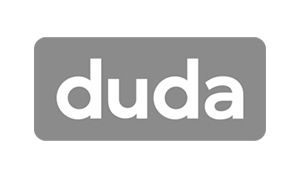Crown Street, Wollongong, 2500
Legal Pages
When running an online business, it can be necessary for your website to include legal information such as terms of services, privacy policies, shipping terms, etc. This article will guide you on how to add this information to your Storefront business, as well as the significance of each page for an online store or website.
Add Legal Pages to Store
Store allows the following legal pages to be created:
- Legal Info
- Terms
- Revocation Policy
- Privacy Policy
- Shipping Cost/Payment Info
To add legal pages:
- Navigate to the Store Control Panel, and then select Settings.
- Click on General, then Legal Pages.
- Click Enable next to the Legal Pages you wish to view.
- Click the Edit button.
The legal pages are shown by clicking the terms & conditions link during the checkout process.
The page links will be automatically attached and displayed at the bottom of each store page in your Starter Site and Facebook shop.
How to acquire links to legal pages?
If you run Store on a site, you may add these links to any spot on your site:
- Enter your Starter Site and check the legal page links at the bottom of the page.
- Check the address bar of your browser after clicking on a link. Copy the portion of the link beginning with #!/ .Each page will have a unique ending. For instance, a Store with "example.com" as the URL and "shop" as the name of the page with the main Store widget will have the following URLs:
- Terms and conditions: www.example.com/shop/pages/terms
- Return policy: www.example.com/shop/pages/returns
- Privacy policy: www.example.com/shop/pages/privacy-policy
- Open your website and go to the Store page. Get the URL from the address bar and add the part you copied. This merged URL is now the URL to your privacy page.
Add this URL to your site. Exact instructions depends on what platform or content management system your site uses.
Which legal pages am I required to include on my site? What information do I need to have?
Which legal pages you need and what content they display, what you sell, what regulations your government has imposed, and so on depend on the type of business you run. You should look at your site and store content to evaluate what kind of legal information you need. You can also hire a lawyer for a consultation to ensure compliance with all applicable laws.
Suggested Content for Legal Pages
Terms and Conditions
Known as TOS. It is a document that explains the rules for using your website/store, including what is allowed and what is not. You can want to include the following items:
- copyright for the website and store pages’ content, trademark,
- ownership of the site,
- requirements to use the store, e.g., whether the registration is necessary.
Return Policy
This is a document specifying your terms for refunds and product returns.
Privacy Policy
You must inform your customers about the information that your store collects and how it will be used. Customers want to know whether their contact information will be shared with third parties, sold, or used for newsletters in any way. You will increase liability among your clients if you provide a clear explanation on this subject.
The Privacy Policy explains what information is gathered via your website and store. This might include:
- use of cookies
- how you handle personal information like email, address, name, etc.
- whether you distribute this information to any 3rd party and if so, for what purpose
Shipping Cost/Payment Info
Your delivery policy will be explained on the shipping cost page, which can include the following information:
- what items are permitted for shipment
- where do you deliver your goods
- terms of delivery
- estimated shipping
- handling returns
The payment information should answer all of your customers' inquiries regarding payment methods in your shop. Storefront enables you to provide your customers with a variety of payment options. If you have specific payment requirements or instructions, it is advisable to inform your clients.
You can also add payment instructions to each payment method in your Storefront store. Once the customer has chosen a payment method, the instructions will be displayed at checkout. The instructions are configured in the Storefront control panel under System Settings and then Payment.
There are several online tools that generate various templates for privacy policies, terms of user, and so forth. You can use these services to acquire simplified and up-to-date material for your legal pages. For example,
https://termsfeed.com
and
http://www.iubenda.com.
How to enable customers to accept the store’s policies before checking out?
Before making a purchase, customers are usually asked to agree to the terms and conditions by enabling the "Terms and Conditions” checkbox. Above the Checkout button, it will display the I agree with Terms and Conditions checkbox. This will be a link that will open a popup window displaying the page text.
The window will also provide links to any other legal pages that you have enabled through the Store Control Panel.
To change how your Terms and Conditions display:
- Select eCommerce from the menu on the left, then click the Manage Store button.
- To access the General menu, click Settings
- Click LegalPages tab.
- Next to Terms and Conditions, click Edit.
- Choose either in popup window or on separate URL from the Show dropdown menu.
- Click
Save.

Love My Online Marketing has 10+ Years of working alongside businesses and helping them grow. Discuss your options for online success from website Design and Development through to Google Marketing.
Do you want more traffic and business leads?
Love My Online Marketing is determined to make a business grow. Our only question is, will it be yours?
































